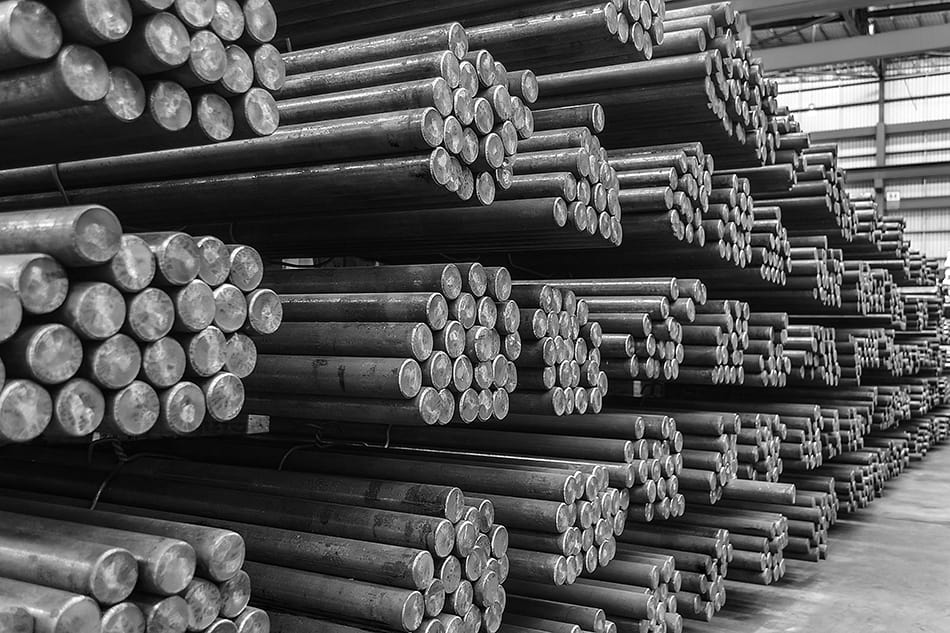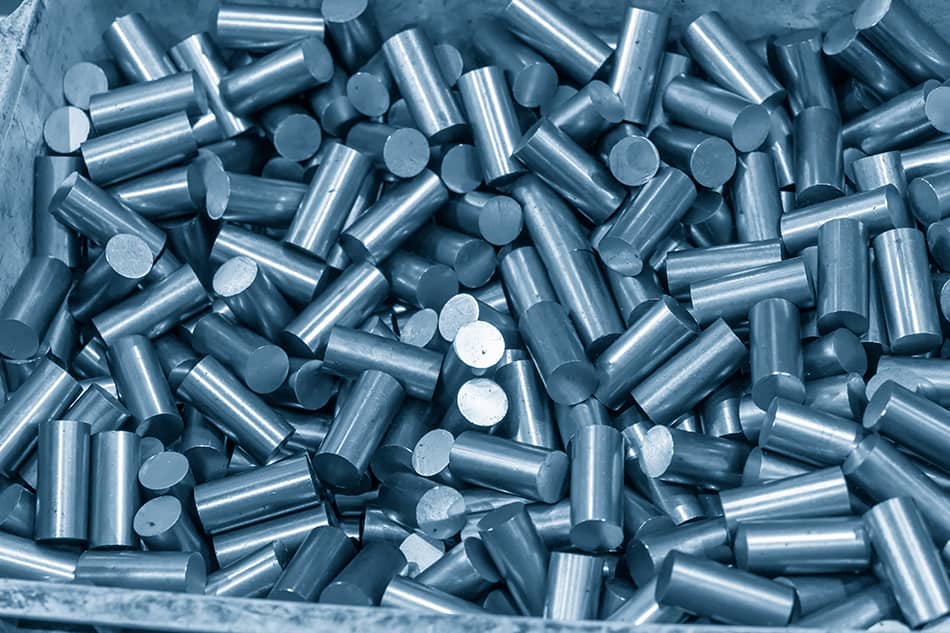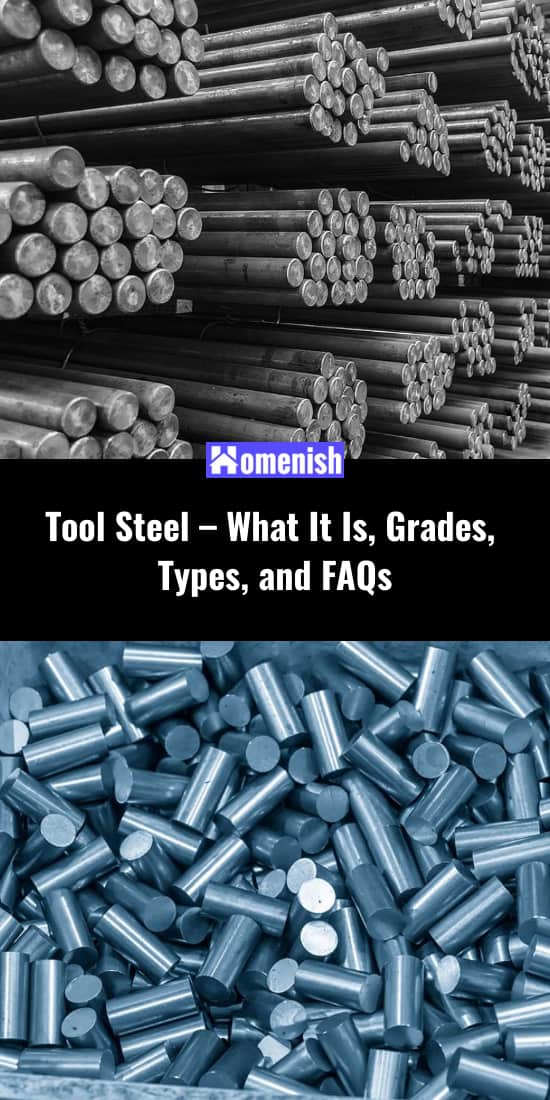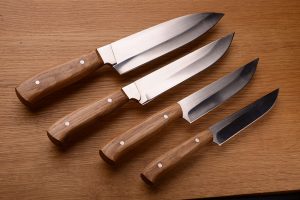Tool steel refers to the range of carbon steel alloys that are hard enough to be made into different types of tools. This includes hand tools, power tools, attachments on heavy machinery, and the machines that make other tools.
The steel needs to be resistant to abrasion and warping at high temperatures. It is heat-treated to make it harder than other types of steel. Some varieties are more resistant to corrosion or stand up better to being quenched in water after the heat-treat process. The added vanadium or limited manganese gives the steel these properties.
In total, there are six major categories of metal called tool steel:
- water-hardening
- oil-hardening
- air-hardening
- shock-resistant
- hot-work
- D type
We’ll give you an idea of what each of these types is and what they’re used for below. We’ll also mention the Special Use tool steels.
The AISI-SAE grades of tool steel is the most typical scale utilized to recognize numerous grades of tool steel. Specific alloys within a grade are assigned a number; for instance: A2, O1, and so on. While we won’t go into as much detail as the different grades, we will give you the range of carbon composition and the strengths of each type.
Types and Grades of Tool Steel
Let’s walk through the six types.
Water-Hardening Group
W-group tool steel is so named because it has to be quenched in water after being heat treated. It ranges in carbon composition from 0.60 to 1.30%. After quenching, it can register as being quite hard (above HRC 66), but it’s more brittle than other tool steels. You wouldn’t want to use this in hot work, meaning industrial applications where the metal heats up.
You’d use this type of steel for creating cutting tools, such as the blades on shears, chisels, rasps, and knives, and other cutlery. You might also use certain grades for blunt tools, such as hammers. Others are used for drill bits and razor blades.
Water-hardening tool steel is typically the least expensive.
Cold-Work Group
This classification actually includes three categories: oil-hardening, air-hardening, and D (high-carbon-chromium). They range in carbon composition from 0.70 to 1.50%. They do not need to be quenched in water. Seeing that they overlap with the W-Group in carbon composition will also give you some clue that you can use these two types of steel for similar purposes. Cold Work steel, however, is harder and more expensive than Water Group steel.
Oil-Hardening: the O Series Steel Grades and Uses
This series is used to make such things as woodworking tools, knives, punches, mower blades, machine bushings, arbors, and knurling tools. It’s kind of all-rounder.
Air-Hardening: the A-Series Steel Grades and Uses
Air-hardening steel has more chromium and so is less susceptible to warping during the heat-treating process. It’s high in both its resistance to wear and in its durability, making it a good machining steel. Some typical uses include injection molding, cams, dies, and forming punches, as well as cutting tools.
High Carbon-Chromium: the D Series Steel Grades and Uses
The D series includes between 10% and 13% chromium. That’s abnormally high for a steel alloy. They maintain their hardness up to 425° C or 797° F, so you could use them in a variety of industrial settings that don’t involve too high of temperatures. This series is used most often for forming dies and cutting tools.
Shock-Resisting Group
The S-Group is good for use in both low and high temperatures. The name doesn’t mean resisting electrical shock but not crumpling or cracking under the shock of an impact. Think of this type of metal as being the bit in your jackhammer. Its carbon composition ranges from 0.5 to 0.6%, and it includes between 1.75 and 3% nickel. It’s a relatively high-cost grade of tool steel.
Typical uses include battering tools and chisels.
Hot-Working Group
H-Group steel is what you want to use in very hot machinery or processes. They can withstand elevated temperatures and pressure for a prolonged period of time. They have a lower amount of carbon and higher amounts of other alloys. Common uses include hot forging, hot shearing, casting dies, casting cores, and hot extrusion.
Special-Purpose Group
P-type tool steel is short for plastic mold steels. They’re good for use in zinc and plastic injection molding. As you can imagine, P-style doesn’t need to be as hard. It’s also less costly but may be harder to find because it’s less common.
L-type tool steel, or low alloy unique function tool steel, is a very hard variety of tool steel. Most applications don’t require such strength, so it’s fairly rare and expensive.
F-type tool steel is water hardened like those in the W-Group but is even more wear-resistant due to its chemical makeup. Because of its upgraded qualities, you will pay more F-steel than W-steel.
Tool Steel FAQs
Here are some of the common questions people ask about tool steel.
What grade is tool steel?
Tool steel ranges in grade. Tool steel, in general, is a type of steel used for making punches, cutting tools, woodworking tools, and knives.
What is the very best tool steel?
The very best tool steel to use depends on what you’re using it for. If you’re using it in a hot manufacturing process (above 425 degrees Celsius), you need steel from the Hot group. If you’re going to be hammering the steel down into another hard substance, such as metal or rock, you need Shock-resistant tool steel. Other varieties of tool steel may work best for you for their affordability.
Is tool steel great for knives?
Yes, tool steel is ideal for making knives. You can use any variety of tool steel to make cutting tools or knives. It is very strong, can be sharpened to a very fine point, and is extremely wear-resistant, though not as wear-resistant as stainless-steel. As for tool steel, the most cost-effective for making knives is tool steel from the Watering-Hardening Group. Your blades would be cut, then heat-treated, then quenched in water to complete the hardening process.
What are the kinds of steel?
Steel is typically classified into 4 groups– Carbon, Alloy, Stainless, and Tool. Carbon Steels just consist of trace quantities of aspects besides carbon and iron. This group is the most typical, representing 90% of steel production. Tool steel is more specialized for creating tools and machines that produce tools. It’s harder than Carbon steel, but don’t get confused; Tool steel still has carbon in it.








